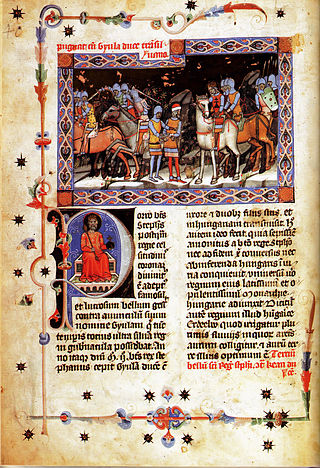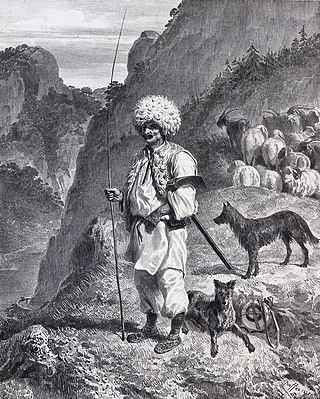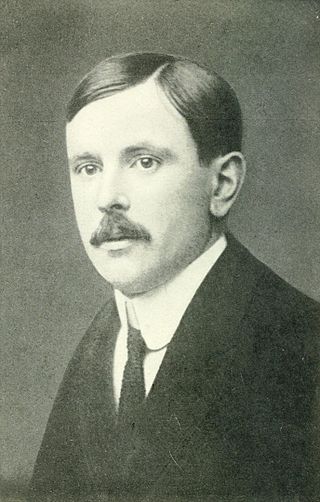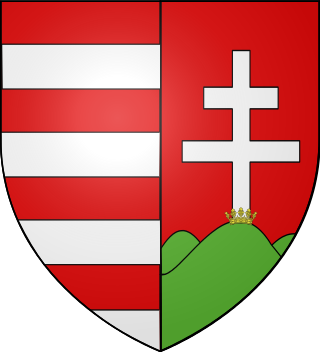
The Kingdom of Hungary held a noble class of individuals,most of whom owned landed property,from the 11th century until the mid-20th century. Initially,a diverse body of people were described as noblemen,but from the late 12th century only high-ranking royal officials were regarded as noble. Most aristocrats claimed ancestry from chieftains of the period preceding the establishment of the kingdom around 1000;others were descended from western European knights who settled in Hungary. The lower-ranking castle warriors also held landed property and served in the royal army. From the 1170s,most privileged laymen called themselves royal servants to emphasize their direct connection to the monarchs. The Golden Bull of 1222 established their liberties,especially tax exemption and the limitation of military obligations. From the 1220s,royal servants were associated with the nobility and the highest-ranking officials were known as barons of the realm. Only those who owned allods –lands free of obligations –were regarded as true noblemen,but other privileged groups of landowners,known as conditional nobles,also existed.

The UCL School of Slavonic and East European Studies is a school of University College London (UCL) specializing in Central,Eastern and South-Eastern Europe,Russia and Eurasia. It teaches a range of subjects,including the history,politics,literature,sociology,economics and languages of the region. It is Britain's largest centre for study of Central,Eastern and South-Eastern Europe and Russia. It has links with universities across Europe and beyond. It became part of UCL in 1999.

Gyula was,according to Muslim and Byzantine sources,the title of one of the leaders,the second in rank,of the Hungarian tribal federation in the 9th–10th centuries. In the earliest Hungarian sources,the title name is only recorded as a personal name.
Robert John Weston Evans is a British historian,whose speciality is the post-medieval history of Central and Eastern Europe. He was educated at Dean Close School,Cheltenham,and later at Jesus College,Cambridge. Evans was Regius Professor of Modern History in the University of Oxford from 1997 to 2011 and is a Fellow of Oriel College,Oxford. He works on the post-medieval history of Central and Eastern Europe,especially concerning that of the Habsburg lands from 1526 to 1918.

István Werbőczy or Stephen Werbőcz was a Hungarian legal theorist and statesman,author of the Hungarian Customary Law,who first became known as a legal scholar and theologian of such eminence that he was appointed to accompany Emperor Charles V to Worms,to take up the cudgels against Martin Luther. In this letter,Pope Clement VII also commended Werbőczy as scholar for his eminence in canon law and theology during Werbőczy's dispute with Martin Luther at the Imperial Diet of Nuremberg. His interests focused on Roman Law,Canon Law and the Hungarian legal system.

The Vlach law refers to the traditional Romanian common law as well as to various special laws and privileges enjoyed or enforced upon particularly pastoralist communities of Romanian stock or origin in European states of the Late Middle Ages and Early modern period,including in the two Romanian polities of Moldavia and Wallachia,as well as in the Kingdom of Hungary,the Kingdom of Poland,Kingdom of Serbia,the Polish–Lithuanian Commonwealth,etc.

Robert William Seton-Watson,commonly referred to as R. W. Seton-Watson and also known by the pseudonym Scotus Viator,was a British political activist and historian who played an active role in encouraging the breakup of Austria-Hungary and the emergence of Czechoslovakia and Yugoslavia during and after the First World War.
LászlóPéter was Emeritus Professor of Hungarian History at the University of London. He completed his first degree at the Eötvös Loránd University of Budapest after which he worked as an archivist and teacher. He left Hungary in 1956,subsequently completing a DPhil at Nuffield College,University of Oxford under the supervision of C. A. Macartney and John Plamenatz. In 1961,he was appointed to a lectureship at SSEES and to a full chair in 1990. He retired in 1994.

Peter Andrew Sherwood is a British Professor of Linguistics,who was born in Hungary,and left the country with his family after 1956. He is a writer,editor,translator and lexicographer and as the Laszlo Birinyi Sr.,Distinguished Professor in Hungarian Language and Culture at the University of North Carolina at Chapel Hill.
Farcaș,also Farkas,Farkaș or Farcas,was a cneaz mentioned in the Diploma of the Joannites issued by king Béla IV of Hungary (1235–1270) on 2 July 1247;the diploma granted territories to the Knights Hospitaller in the Banate of Severin and Cumania. Farcașheld a kenazate which was given to the knights by the king. His kenazate lay in the northeast of modern Oltenia.
Gyula III,also Iula or Gyula the Younger,Geula or Gyla,was an early medieval ruler in Transylvania. Around 1003,he and his family were attacked,dispossessed and captured by King Stephen I of Hungary (1000/1001-1038). The name "Gyula" was also a title,the second highest rank in Hungarian tribal confederation.

Anonymus Bele regis notarius or Master P. was the notary and chronicler of a Hungarian king,probably Béla III. Little is known about him,but his latinized name began with P, as he referred to himself as "P. dictus magister".

The Transylvanian Diet was an important legislative,administrative and judicial body of the Principality of Transylvania between 1570 and 1867. The general assemblies of the Transylvanian noblemen and the joint assemblies of the representatives of the "Three Nations of Transylvania"—the noblemen,Székelys and Saxons—gave rise to its development. After the disintegration of the medieval Kingdom of Hungary in 1541,delegates from the counties of the eastern and northeastern territories of Hungary proper also attained the Transylvanian Diet,transforming it into a legal successor of the medieval Diets of Hungary.

The judge royal,also justiciar,chief justice or Lord Chief Justice,was the second-highest judge,preceded only by the palatine,in the Kingdom of Hungary between around 1127 and 1884. After 1884,the judge royal was only a symbolic function,but it was only in 1918 —with the end of Habsburgs in the Kingdom of Hungary —that the function ceased officially.

A conditional noble or predialist was a landowner in the Kingdom of Hungary who was obliged to render specific services to his lord in return for his landholding,in contrast with a "true nobleman of the realm" who held his estates free of such services. Most conditional nobles lived in the border territories of the kingdom,including Slavonia and Transylvania,but some of their groups possessed lands in estates of Roman Catholic prelates. Certain groups of conditional nobility,including the "ecclesiastic nobles" and the "nobles of Turopolje" preserved their specific status until the 19th century.

The nobles of Turopolje or nobles of the plain formed a group of conditional nobles in Slavonia within the Kingdom of Hungary from the second half of the 13th century to the middle of the 19th century. They lived in a self-governing "noble peasant community" and were exempted of taxation. They were partisans of the Croatian-Hungarian Party in the 1830s and 1840s. They were named after the region of Turopolje south of Zagreb.

The Master of the doorkeepers was a high-ranking official in the Kingdom of Hungary from the beginning of the 11th century to 1945. Formerly,the office was known as Ispán of the keepers.

In the Late Middle Ages,the Kingdom of Hungary,a country in Central Europe,experienced a period of interregnum in the early 14th century. Royal power was restored under Charles I (1308–1342),a scion of the Capetian House of Anjou. Gold and silver mines opened in his reign produced about one third of the world's total production up until the 1490s. The kingdom reached the peak of its power under Louis the Great (1342–1382) who led military campaigns against Lithuania,southern Italy and other faraway territories.
Scholarly theories about the origin of the Székelys can be divided into four main groups. Medieval chronicles unanimously stated that the Székelys were descended from the Huns and settled in the Carpathian Basin centuries before the Hungarians conquered the territory in the late 9th century. This theory is refuted by most modern specialists. According to a widely accepted modern hypothesis,the Székelys were originally a Turkic people who joined the Magyars in the Pontic steppes. Another well-known theory states that the Székelys are simply Magyars,descended from the border guards of the Kingdom of Hungary who settled in the easternmost region of the Carpathian Basin and preserved their special privileges for centuries. According to a fourth theory,the Székelys' origin can be traced back to the Late Avar population of the Carpathian Basin.
The law of Hungary is civil law. It was first codified during the socialist period.












